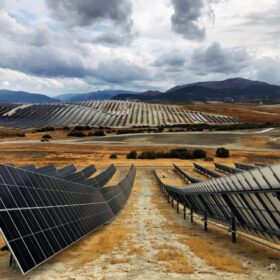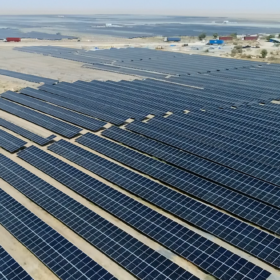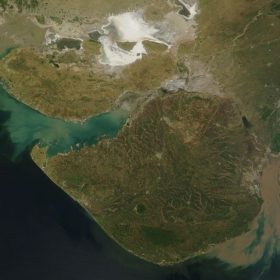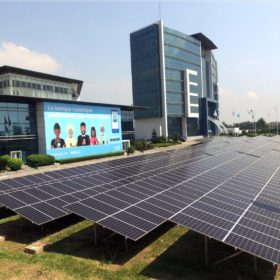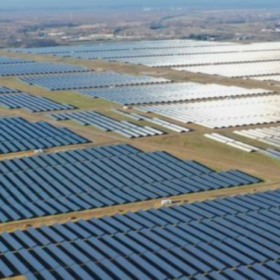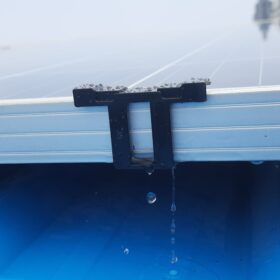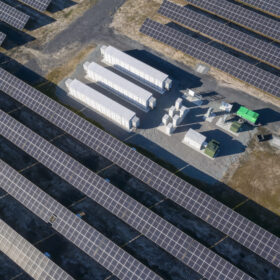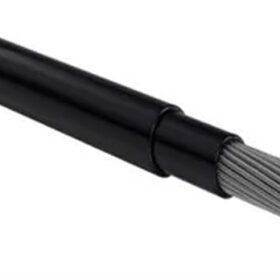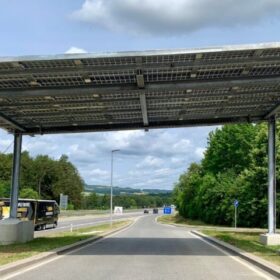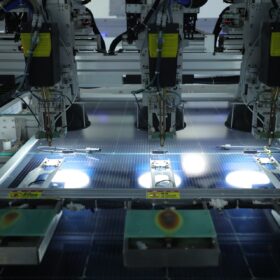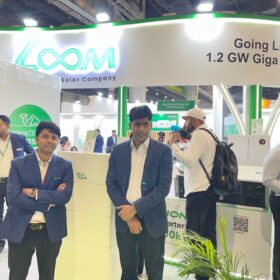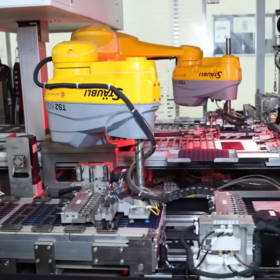New guidelines for inter-row spacing of PV power plants
A Canadian research group has applied new guidelines for ground coverage ratios to 31 locations in Mexico, the United States, and Canada. It found the new formulae show that the factors affecting inter-row energy yield loss are highly dependent on latitude.
Gujarat tenders 1.2 GW of PV projects in Khavda Solar Park
Gujarat Urja Vikas Nigam Ltd (GUVNL) has launched the tender to develop 1.2 GW of PV projects (including 600 MW under the greenshoe option) in Khavda Solar Park. The projects are to be developed on a build-own-operate basis.
SJVN tenders BoS package for 360 MW of solar
SJVN Green Energy has invited bids to install and commission two projects of 100 MW (AC) and 260 MW (AC), respectively, in the Kutch district of Gujarat.
Africa50 signs MoU with International Solar Alliance to support PV projects across Africa
Africa50 and International Solar Alliance (ISA) will leverage each other’s networks to mobilize funding and raise awareness of African solar projects in European and Indian markets.
Waaree Renewable secures 100 MWp solar EPC contract
Waaree Renewable Technologies has secured the contract to set up a 100 MWp solar plant on a turnkey basis. It expects to complete the project within the current fiscal 2023-24.
Water-draining clamp for solar panels
India’s Prasham Greens has designed water-draining clamps to drain the water accumulated on the edges of the solar panels after rains and water-based cleaning.
Solar to reach ‘unassailable position’ as cheapest electricity source, says DNV
Solar’s levelized cost of electricity will reach $30/MWh in 2050, as global capacity surges, said DNV.
Japanese provider launches new aluminum cables for PV systems
Japan-based GBP said its new cables are complying with several international standards. It claims the cables have an antitheft function, as they should discourage copper thieves from approaching a PV system.
Conquering change: Artificial Intelligence and how to be future ready
The rise of Artificial Intelligence (AI) technologies presents a big opportunity for the energy industry. AI and the language of the input query provide us with a powerful tool against incorrect information.
Germany launches 33 kW prototype highway PV system
Germany has deployed a 33 kW prototype highway PV system in collaboration with Austria and Switzerland. The system aims to harness solar energy from highway infrastructure.
